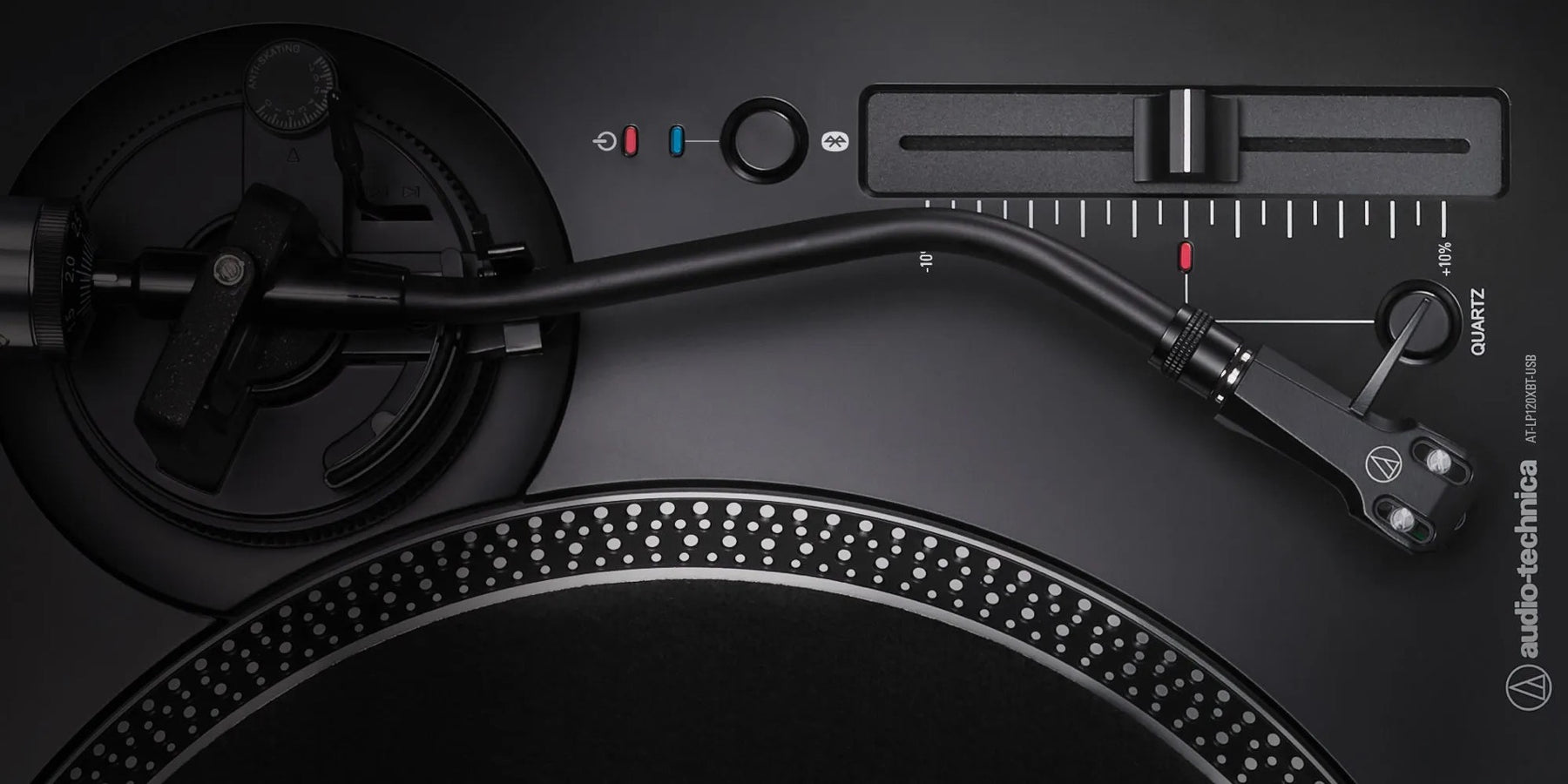
The Audio Technica AT-LP120XBT-USB VS Rega Planar 1 Plus
The
Both the Technica AT-LP120xBT-USB and the P1 Plus turntables are designed to play records - but approach this in (very) different ways. In this article, we'll go through how each works, the technologies behind them and which is best for playing your records.
What is a Manual ?
Both the Technica and turntables are fully manual. This means you physically place the stylus onto the , via the arm lifter. You'll then also need to manually remove it via the lifter when the record is finished playing. This is actually a good thing. It means there are (way) less things connected to the and assembly. And that means better performance, as the arm and are free to do their job of tracking the record groove unhindered.
A Phono what now?
Audio Technica is fitted with built-in switchable line/ so you can connect directly to either a traditional or an aux type line input on an amplifier. The Rega Planar 1 Plus has MM Phono out only so must be connected to a line in on amplifier. You'll even be able to connect direct to aux inputs on active or wireless speakers with either turntable. The AT-LP120xBT-USB , as the "BT" in the elongated product title code tells us, is also able to send the signal via and has to enable direct connection to a computer with USB connectivity.
So what's the difference between Technica and ?
The main difference is that the Technica AT-LP120xBT-USB is Direct Drive and the P1 Plus is . These are the two most common forms of rotating propulsion in all turntables and there are different opinions on the benefits and attributes of both. A generally has the motor ( in this instance DC Servo) directly beneath the centre of the , bearing and spindle and propels instantly and directly, ostensibly with quicker start-up and arguably greater and more consistent speed accuracy and torque.
A generally has the motor isolated and separated from the main bearing and assembly and utilises a pulley system that connects the via a belt. In theory, this separation helps reduce resonance, and noise. This then increases transparency and openness (a very good thing!).
vs Direct Drive?
When it comes to vs drive drive, both have pros and cons. People often have their own preferences for both technologies based on their usage and requirements.
What features does the AT-LP120xBT-USB have?
As for features, the Technica AT-LP120xBT-USB has the ability to play 33, 45 and 78 RPM records. It has a traditional, half-inch mount, removable universal headshell with a VM 95E . This enables future upgrades (BIG BONUS!), a stroboscopic with speed indicator and sliding pitch control for speed adjustment - also a huge plus!
What features does the Planar 1 Plus have?
The 1 Plus is a simpler device. It connects directly to the of an equipped amplifier or can be switched via the inbuilt to either phono or a line input. That's what the Plus stands for. It features the one-piece RB 110 with half-inch mount to enable future upgrades to a better (Once again, big bonus here!). The P1 Plus also has a low mass plinth and a phenolic resin .
So the verdict?
Both these turntables are excellent value for money and will reward you with wonderful and better than expected performance at this price point level. Both give you the option to upgrade to a better as you re-explore your . Overall, you can't really go wrong with either. Jump onto YouTube or come in-store to have a look.
Leave a comment